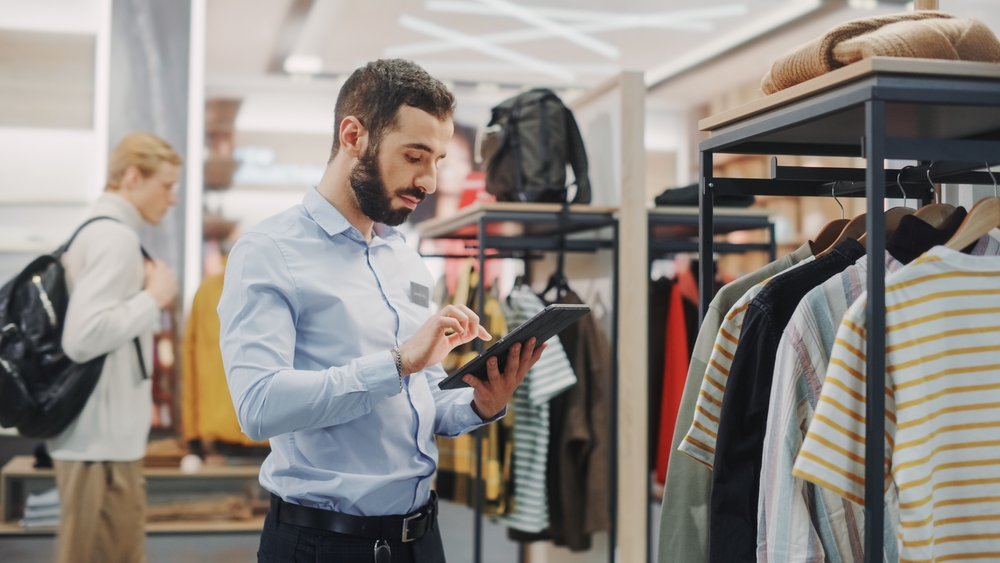
Shopper Insights vs. Consumer Insights: What’s the difference and what it means for your business
What’s the difference and what it means for your business.
In the world of retail sales, lines often get blurred. This has definitely been the case with shopper insights and consumer insights, as many people in the business continue to toss them around as if they were the same thing.
They’re not.
In fact, understanding the difference between consumer and shopper insights is critical to mapping out a successful sales and operations strategy.
What is the difference between a shopper and a consumer?
A “shopper” is a person who actually makes the buying decision. Whether it’s physically visiting a retail store or transacting the purchase online, a shopper is the individual who selects the product and completes the purchase. The one who does the buying.
A “consumer” is the end-user of a product. This person may or may not have transacted the purchase, but is ultimately the one who will either appreciate the product and its attributes or not. A consumer is the one who develops a relationship with the product.
Let’s look at a simple example illustrating the difference between a shopper and consumer. Let’s say a mother visits an athletic shoe store and purchases a colorful new pair of “kicks” for her teenage daughter. In this case, the mother is the shopper. She does the buying. However, it’s not Mom who gets to experience or enjoy the product. That person is her daughter – the consumer. She didn’t pay for the shoes. She didn’t even go to the store to pick out the shoes. Yet, she’s the one who will develop a relationship with the brand.
Now that we’ve established the difference between shoppers and consumers, let’s look at the different insights each can offer brands and retailers.
What are shopper insights?
Shopper data is collected to reveal insights regarding how, what and when products are purchased. For example, did a shopper visit several stores before finally making a purchase? What other complimentary items, if any, were purchased during their store visit? Did they take advantage of sale pricing, coupons, or any other special offer? Did they order online and pickup in store (BOPIS)? How often do they purchase this particular product?
Shopper insights are used to glean valuable information on the shopping experience itself, which can play a major role in how a brand or retailer makes strategic decisions to optimize its operations, including distribution, sales channels, inventory, display and shelf placement, promotional windows, product pricing, and any other factor directly related to the purchasing decision.
In other words, shopper insights tend to be focused on the transaction. What makes a shopper decide to purchase a given product at a given time in a given way.
What are consumer insights?
Consumer insights focus on the personal relationships end users have with a product or a brand. What attitudes do they possess regarding the brand? What image does the brand have that connects with consumers? What is the unique selling proposition that elevates one product over its competitive set? How old are the average consumers of a given product? What common thread of emotions or feelings does a product evoke in its consumers?
Unlike shopper insights, consumer insights don’t focus one how and when products are purchased. They focus on why they are purchased, who are they purchased for, and how these end users interact with or react to products after they are purchased. Essentially, consumer insights focus on identifying the need that a brand or product meets in the lives of those who use them.
This intelligence is valuable because it’s used to guide marketing messaging, advertising programs, loyalty programs, social media influencers and campaigns, and a host of other areas that drive product and brand awareness and strengthen the connection with consumers.
Shopper insights vs. consumer insights.
First of all, the ideal relationship between the two is not an adversarial one. For optimal sales performance, you don’t ever want the situation to become a shopper insights vs. consumer insights battle of the ages. Rather, you want to find ways shopper insights and consumer insights can work in tandem and feed off each other to improve customer engagement and boost sales.
Granted, this can sometimes be difficult given the very different perspectives those who live in bottom-line sales (shopper insights) and those who do marketing and branding (consumer insights) can have regarding the best approach to engage customers. However, when the two work together effectively it can be a thing of beauty.
Consumer insights can be used to drive the right messaging, colors, brand voice and attitude, while shopper insights can lead to pragmatic decisions in terms of the best way to get these messages to potential buyers, such as store flow, merchandising and displays, omnichannel sales strategies and product distribution.
For example, a snack food brand might use consumer insights to come up with an exciting new flavor or even a new packaging design. At the same time, they might examine shopper insights that lead to them to increase distribution in certain regions of the country where the brand is selling particularly well.
Where do you get shopper and consumer insights?
Data. Data. Data. Where else? Robust data has become the new currency in the business of sales. While there is still a place for traditional intelligence gathering techniques, such as consumer surveys and mystery shoppers, business is moving far too fast to rely solely on these analog solutions today.
Real-time digital data allows you to see your shoppers and consumers with a depth and immediacy that was never possible before. Eduardo Santaella of The Revenue Optimization Companies (T-ROC), elaborates.
“Data is the disruptor in sales today and it really doesn’t matter what size your business is. Data is allowing our Fortune 100 clients and those that are far smaller to gain a level of visibility into their operations, shoppers and customers that they’ve never had before. In stores, real-time data and photo capture provide an instant glimpse into the factors that impact shopper behavior, such as merchandising, displays, store cleanliness and traffic flow. It’s also being used to collect valuable consumer information by connecting with users via online channels and by using tools that automatically follow up after the purchase to learn how users are interacting with brands and products.”
Insights are not driven solely by data volume.
While it’s important to capture comprehensive shopper and consumer data, compiling mountains of facts and figures should not be the primary goal. Here’s why. Both consumer and shopper insights are gleaned from the data you capture. Therefore, if that data isn’t highly relevant to your particular business and base of shoppers and consumers, then the insights you take from it are going to be equally irrelevant.
In other words, information overload is not a sound intelligence gathering strategy. You want to capture actionable and relevant data that leads to clear insights into your shoppers and consumers and, ultimately, helps you make business decisions you are confident will help you better address their needs and wants.
Capturing shopper and consumer data.
Here’s the fly in the ointment. Initiating a data-driven shopper insights and consumer insights program can be a substantial investment in technology, time and human resources for most businesses. Not to mention the fact that many simply don’t have the expertise to effectively guide an actionable data and insights program in house.
This is why a lot of business turn to retail technology and management partners for guidance. A good retail management company already has proprietary digital data solutions available that can be quickly customized to meet the specific needs of your business. Additionally, a good retail partner will bring real data expertise and fresh perspectives to the equation to help businesses see challenges and opportunities they likely would not identify on their own.
So, instead of starting from square one, businesses are able hit the ground running with a comprehensive data and insights program built around their requirements and designed to provide the shopper and consumer insights needed to make sound, smart and impactful business decisions.
If you’re a brand or retailer interested in learning more about shopper insights vs. consumer insights, as well as ways to optimize retail operations and sales performance, from digital customer engagement solutions to on-demand staffing to data-driven management solutions, explore the services of The Revenue Optimization Companies (T-TOC), a leading provider of people and technology solutions to Fortune 100 companies. Learn more at www.trocglobal.com.
If you found this post interesting and insightful, we invite you to explore additional posts covering all things retail at https://trocglobal.com/company/#blog.
TROC is the leading provider of premier staffing outsource, software, managed technology services, and consumer insights for the top global brands, retailers, manufacturers, service providers, and distributors. The company’s distinctive solutions address the entire lifecycle of brick and mortar brand and retail operations by combining retail expertise, best practices, and technology to help its customers achieve sales and operational excellence as well as a sustainable competitive advantage. As a Retail 4.0 thought leader, T-ROC enables companies with high-value products in the physical world to thrive through the digitalization of the physical shopping experience. To learn more about T-ROC, visit www.trocglobal.com.








